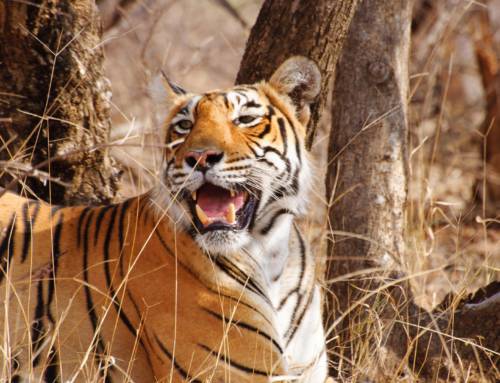Research Article: Patankar, V., D’Souza, E., & Marathe, A. (2019). Latitude and live coral cover independently affect Chaetodontid and Pomacanthid fish community distribution in the Andaman and Nicobar archipelago, India. Marine Biodiversity, 49(1), 235-245.
Blog Author: Yashendu C Joshi
Key Takeaways:
- 75% of the world’s coral reefs face a serious threat due to constantly rising temperatures and various local pressures such as pollution, coastal development, overfishing, and more.
- Coral Reefs of the Andaman and Nicobar archipelago, despite being a biodiversity hotspot, have faced significant challenges due to catastrophic events like tsunamis, resulting in substantial biodiversity losses.
- The scientists systematically surveyed 75 locations spread across 51 islands within the Andaman and Nicobar archipelago.
- The research examined approximately 45 species of reef fish and indicates that latitude significantly influences the abundance and distribution of fish in the Andaman Islands.
- The research also indicates that the existence of coral habitats significantly impacts the fish populations within the region.
According to a report by the World Resource Institute, approximately 75% of the world’s coral reefs face a serious threat due to constantly rising temperatures and various local pressures such as pollution, coastal development, overfishing, and more. But why are coral reefs crucial? Coral reefs are one of the most biologically diverse and productive ecosystems on our planet, supporting over 4000 fish species, as well as a plethora of other life forms including molluscs, crustaceans, urchins, starfish, sponges, and many others.
In this study, the authors wished to understand the abundance and distribution of two coral reef fish groups, namely chaetodontids and pomacanthids, in the Andaman and Nicobar archipelago in India. This archipelago is a hotspot of biodiversity, with over 9000 terrestrial and marine animal species, with over 11% endemism. However, it has suffered significant impacts from several major catastrophic events. The region is particularly vulnerable to tsunamis, with the 2004 Tsunami causing the loss of over 70% of live corals around the archipelago. Such sudden bleaching events pose severe challenges for the thousands of reef fishes dependent on these ecosystems. To conserve and protect such reef fishes, it is crucial first to understand the precise determinants of the distribution and abundance of such fish species. Addressing this research gap, the study attempts to understand the relationship of benthic variables and latitude, with species richness and species diversity*.
The researchers conducted systematic surveys at 75 sites across 51 islands in the Andaman and Nicobar archipelago. Throughout their extensive underwater surveys, they encountered 1910 individuals of the chaetodontid group, comprising 30 species and 4 genera, and 419 individuals of the pomacanthid group, belonging to 13 species and 9 genera. Alongside these surveys, they collected crucial data on benthic cover, which refers to the surface of the ocean. Their findings suggest that latitude plays a more significant role than benthic variables in the Andaman Islands; however, the availability of coral habitat is one of the most important factors influencing these fishes. Moreover, according to them, areas with both low and high species richness support similar numbers of individuals in the Andamans. This insight could guide coral reef conservation strategies that currently prioritise sites with higher abundance over richness. The authors also state that there still exists a major research gap in understanding contemporary and historical patterns in species diversity, and the mechanisms driving such processes, on the reef systems. Such research will go a long way in conserving fish richness and diversity, coral productivity, and other threatened species in such systems.
* Species richness is simply the number of different species observed, whereas species diversity is slightly more complex as it also looks at the abundance of each of the observed species.
You can access the original article here.
Key Words: Andaman and Nicobar Islands, Coral reefs, Fish fauna, Conservation, Chaetodontids, Pomacanthids, Island biogeography, Marine Conservation



